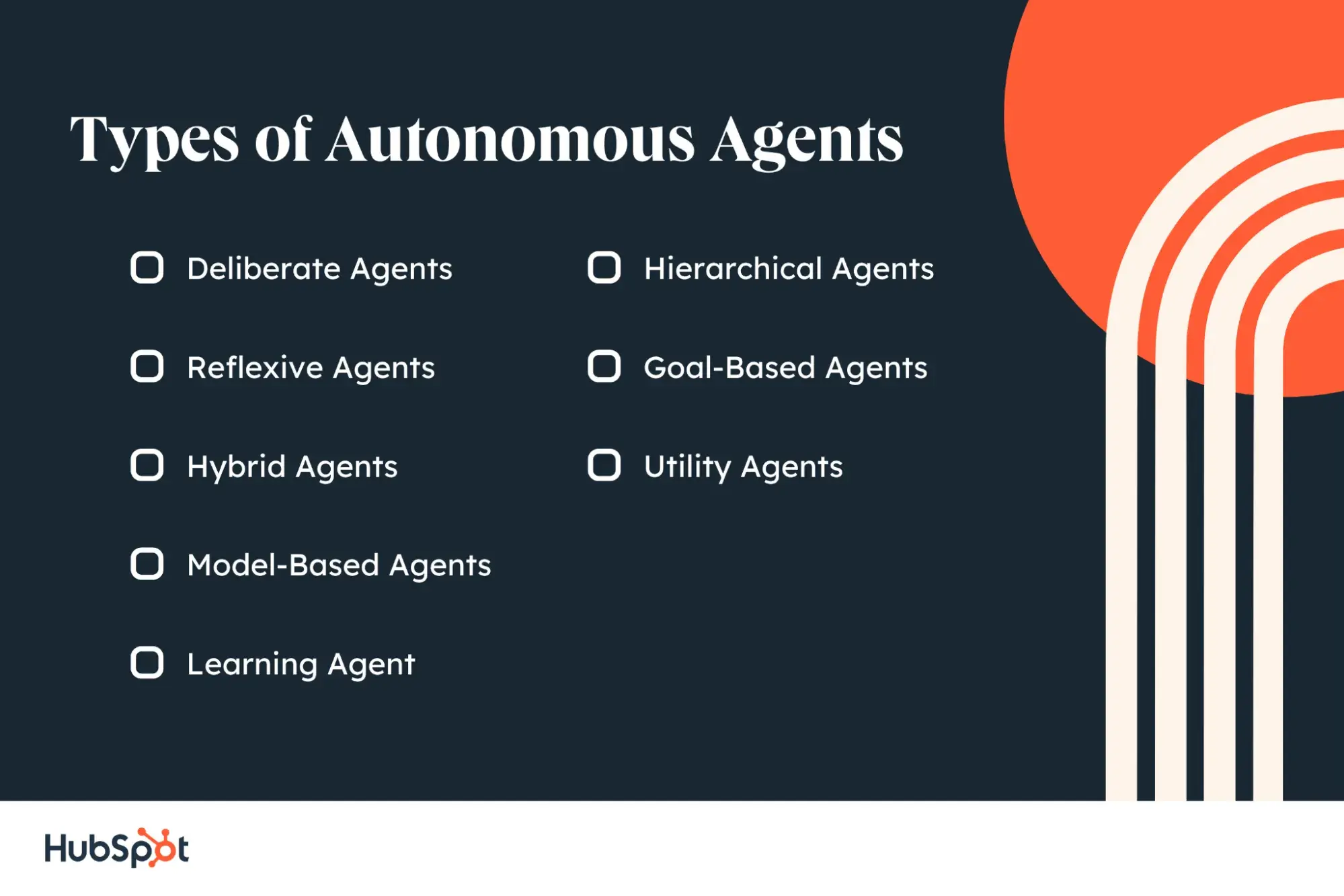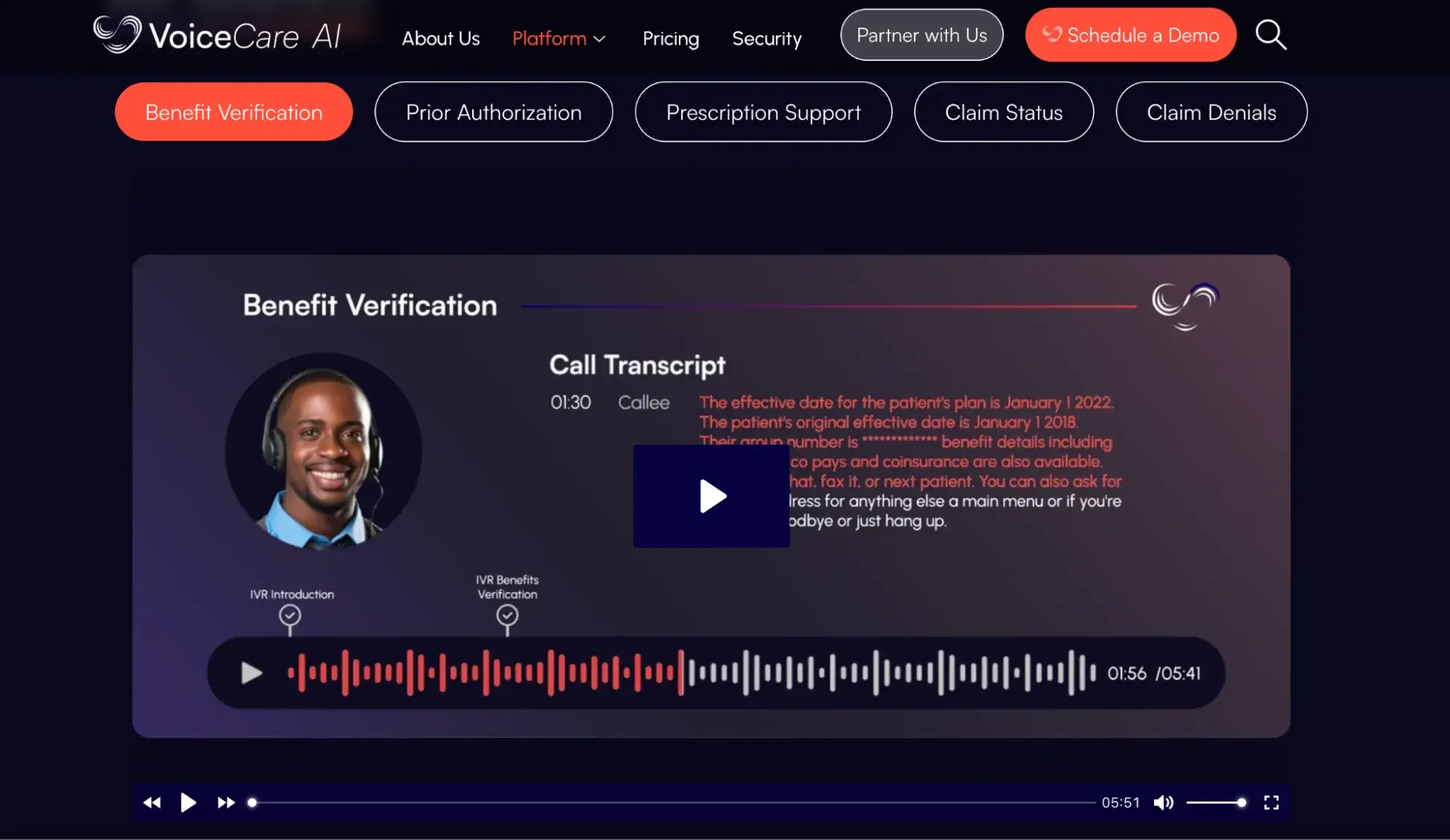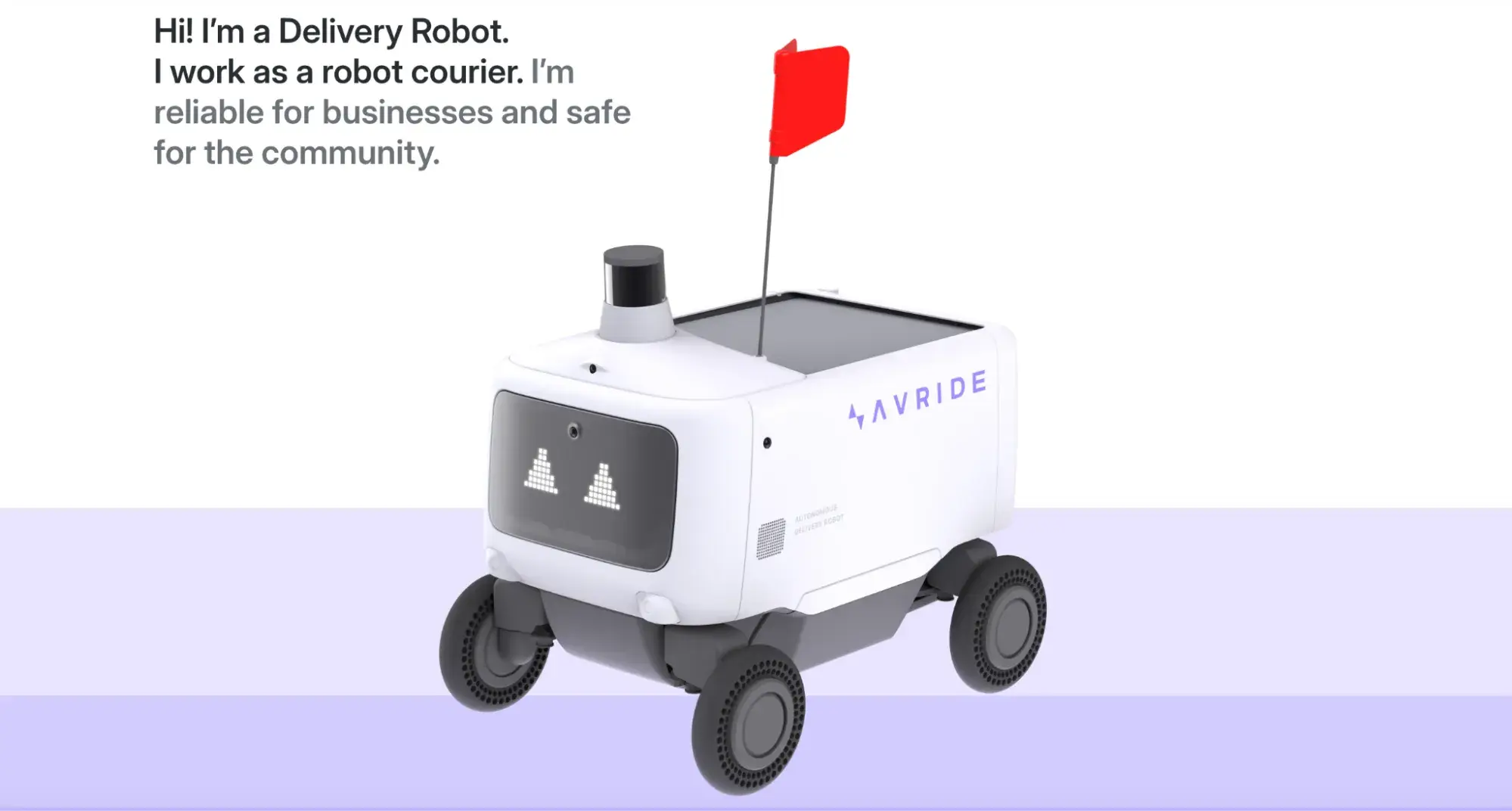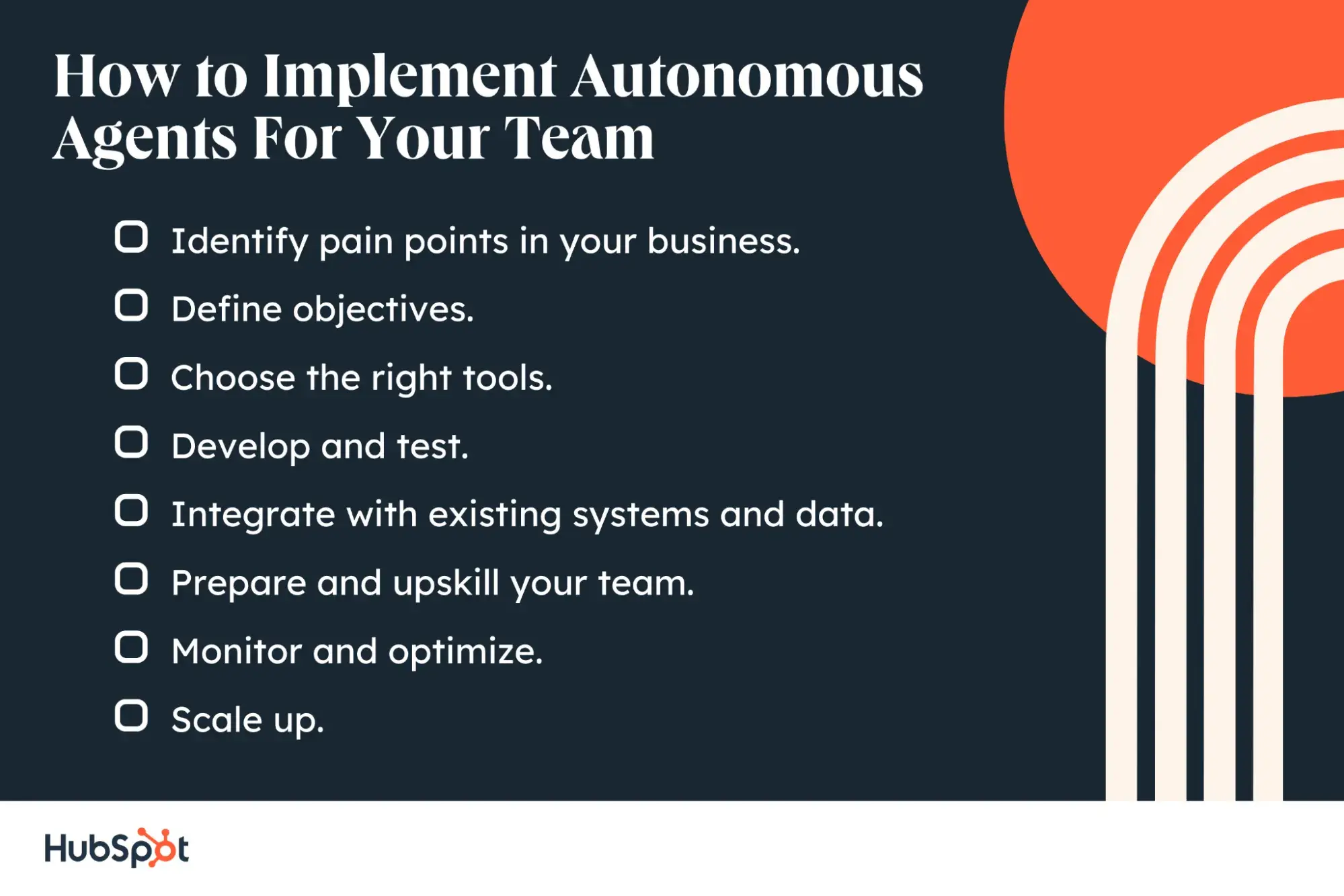AI with Agency: How Autonomous Agents Solve Business Problems & Improve Customer Experience
When you hear the word agent, what do you think of? A real estate agent, an insurance agent, or even an FBI agent? Far beyond an assistant following rote instructions, an agent has the power and ability to make...

When you hear the word agent, what do you think of? A real estate agent, an insurance agent, or even an FBI agent? Far beyond an assistant following rote instructions, an agent has the power and ability to make things happen on your behalf. Wouldn’t it be great if we had technology that could carry out independent tasks and take work off your plate? Autonomous agents are rapidly becoming a reality, capable of completing tasks for humans ranging from mundane to complex. In 2024, just 1% of software included autonomous agents, but by 2028, that number may rise to 33%. In this post, I explore what autonomous agents are, what they can do for you and your customers, and how to implement one at your organization. Table of Contents An autonomous agent is an AI-powered system designed to complete tasks and make decisions independently to reach a goal. Autonomous agents are a subset of agentic AI, a type of artificial intelligence that learns from interactions and stimuli, makes decisions, and adapts to its environment with minimal or no human intervention. “Do you need assistance? A Rozzum always completes its task!” That’s the refrain of Roz, the goal-oriented robot who crash-landed on a remote island in “The Wild Robot” movie, one of my favorite animated film flics. Roz immediately begins adapting to her new environment and searching for a customer. When she finally finds one — caring for an orphaned gosling — she throws her energy into the survival of not only the gosling but the entire island. Like Roz, autonomous agents operate independently of humans, adapt to their surroundings, and complete goal-directed behavior. One differentiator that separates agentic AI from other types of AI is access to real-time data and environmental inputs. This differs from a foundation model like ChatGPT, which is pre-trained on large, static datasets and pulls from general knowledge only. Foundation models rely heavily on human prompts to operate, unlike an autonomous agent, which makes a series of decisions based on its goal. Companies are starting to build autonomous agents for everything from marketing to sales to customer service. Gartner predicts that agentic AI will solve 80% of customer problems by 2029. But how does this look in everyday life? Examples of autonomous agents include: These autonomous agents and others can alleviate challenges in your business, like fraud, customer churn, and the high cost of operations. When implemented correctly, autonomous agents can speed up processes, increase productivity, increase customer satisfaction, and cut operational costs by as much as 30%. If you’re like me, you were introduced to AI agents through early versions of website chatbots and voice assistants like Siri and Alexa. While those tools can be incredibly helpful, they rely heavily on human prompting and can only perform tasks or answer questions based on predefined data sets. In other words, they aren’t autonomous. “A chatbot is just very reactive based on the FAQs or the articles of knowledge that your organization has created. An autonomous agent, however, is going to look at you holistically as a customer,” says Zack Hamilton, Head of Growth Strategy and Enablement for parcelLab. An autonomous agent is designed to take proactive action based on a goal, like customer retention or satisfaction. “One of the first agents we built focused on packages that are trending late. If there’s an issue with the carrier or a warehouse delay, the agent monitors that data and proactively notifies customers,” shares Hamilton. According to Hamilton, “We have retailers globally adopting this because it improves customer satisfaction and reduces call volume. We’ve seen ‘Where’s my order?’ calls decrease by 20 to 30%.” Autonomous Agent/Agentic AI AI Agent Level of independence Fully autonomous Requires user input Complexity Can handle dynamic environments Better for simpler, more structured tasks End goal Goal-driven problem-solving Complete a task, following specific instructions Learning and adaptability Continuously learns and evolves Static, rule-based Autonomous agents function through a combination of machine learning, natural language processing (NLP), and reinforcement learning. Agentic AI uses a system of foundation models, tools, and architectures that enable an autonomous agent to operate. The key is that they’re flexible, with the ability to plan and adapt to challenges that arise. Let’s take this example from The Wild Robot to see how autonomous agents function. Roz is searching for a customer and gets hit by a big wall of water. Roz sees another wave coming and determines that climbing a cliff to reach land is the best way to stay safe and find her customer. Roz attempts to climb the cliff but falls into the water again. Roz observes a crab climbing the cliff sideways and mimics its behavior to scale the cliff successfully. Interested in building your own autonomous agent? Each autonomous agent follows a different model, so consider these types as you plan. Deliberative agents are cognitive systems that make decisions based on symbolic reasoning, planning, and maintaining a model of the world. Example: A chess-playing AI that evaluates future board states before making a move. How they work: These agents use complex algorithms, like search and planning techniques, to evaluate possible outcomes and choose an optimal action. Simple reflex agents act on current sensor inputs, adjusting to environmental inputs in real time. Reflexive agents are not typically agentic AI on their own but are an integral piece of agentic AI models. Example: A simple thermostat adjusts its heating or cooling based on temperature readings. How they work: Reflexive agents continuously monitor the environment through sensors or cameras, reacting based on inputs. Hybrid agents combine different AI architectures, such as reflexive and deliberative systems, to reach the best outcomes. Typically, a reactive component will handle real-time responses, while a deliberative system will plan ahead. Example: A self-driving car uses deliberate reasoning to plan and follow a route, then uses reflexive reasoning to slam on its brakes when a pedestrian crosses its path. How they work: They integrate reactive behavior (quick responses) with goal-oriented planning and utility-based optimization to carry out complex tasks. Model-based agents maintain an internal model of their environment to predict how actions will affect future states. Example: Autonomous vacuums like Roomba, which maps a room and navigates obstacles with a model. How they work: Model-based agents use mapping techniques and predictive algorithms to handle dynamic environments effectively. Learning agents improve performance over time by analyzing past experiences and modifying behavior based on feedback. Example: A recommendation system like Netflix, which adapts to user preferences based on viewing history. How they work: These systems use reinforcement learning or other machine learning techniques to refine their algorithms based on new data and feedback from previous actions. I also learned that multi-agent systems are possible in agentic AI (mind blown!). Consider, for instance, a system where a high-level autonomous agent oversees lower-level agents that manage specialized functions like customer service, customer retention, and selling. Example: Swarm by OpenAI, while still experimental, allows autonomous agents to work together or even create new autonomous agents to reach an overarching goal. How they work: Each Hierarchical Autonomous Agent Swarm (HAAS) starts with a supreme oversight board (Tier 0), the top of the hierarchy, which oversees the mission and ethical framework. The board makes high-level decisions and can make Executive agents (Tier 1), similar to C-suite roles. Executive agents can create lower-tier agents (Tier 2) to perform specified tasks like data analysis or customer support. Lower-level and executive agents cannot override the authority of the tier above them. While some autonomous agents are goal-based, others are utility-based. Goal-based agents follow a specific, pre-defined goal, like getting from point A to point B. Take, for instance, the Roomba example. Did you clean all accessible floor space? Then, check that your goal is accomplished. These are simpler to design and implement and work well with tasks with a clear objective. A utility-based agent, on the other hand, makes decisions based on utility. The agent doesn’t only care about goal completion. It wants to optimize an outcome, like efficiency or time to completion. One good example is Uber’s algorithm, which considers both wait time and trip cost when matching riders with drivers. Utility-based agents are highly adaptable and flexible, requiring more sophisticated modeling. Ready to see autonomous agents in action? While agentic AI is still new and evolving, you can learn from these businesses putting autonomous agents to work. While we aren’t quite ready for autonomous agents to make healthcare diagnoses and treatments, there are other viable uses for autonomous agents in healthcare. Take, for example, administrative tasks like insurance verification, prior authorizations, and claims processing, which health systems say require 70,000 calls per month. Joy, an autonomous agent from startup VoiceCareAI, is being piloted by the Mayo Clinic and others to call insurers to complete these functions. For example, Joy can call to check if there’s a prior authorization on file. If there’s not, request one, then follow up later for the number. Since clinicians spend over 60% of their time on administrative work, this frees them up for patient care. Now, all we need is a consumer version to negotiate with our insurance companies for us. Get ready. Your next pizza or coffee may come via robot. Fleets of robot couriers like Avride are rolling out on college campuses, delivering everything from hot food to groceries to shopping hauls. Like self-driving cars, delivery robots need to make real-time decisions in a dynamic environment, navigating streets, pedestrians, and challenges like weather, construction, or animals. Avride boasts complete autonomy for its robots, which use an extensive array of sensors for environmental inputs so they can complete their goal. The stock market is a complex venture, requiring traders to make hundreds of decisions a day based on factors like global news headlines, company performance, and stock market activity. That’s why it made a great area for JPMorgan & Chase to build an autonomous AI trading agent. LOXM uses NLP and machine learning to understand the market in real-time and execute client orders based on optimal outcomes like trade prices and minimizing market impact. JPMorgan & Chase reports that LOXM has improved order efficiency by 15% and is introducing agentic AI in other areas, including contract intelligence, recruiting, and employee productivity. So, how do you tap into the power of autonomous agents? I spoke to CX experts on the frontlines of this work about how to start building agentic AI at your company. Here’s what they said. First, examine the friction points in your business to uncover opportunities for growth and automation. “Think about the overall customer experiences — what are your biggest frictions, and what‘s impacting your bottom line the most? That could be customer retention, customer lifetime value, or a high customer acquisition cost. There’s always that one business metric,” says Hamilton. “Then think, ‘Okay, how can I apply an agent to that?’” Next, choose the pain point that you want to solve and choose an objective. “Start small. It can be a very small use case,” advises Hamilton. Clearly outline the tasks and goals you want the agent to achieve and make them quantifiable when possible. Here are several examples: Select the appropriate AI tools and platforms, such as Breeze AI by HubSpot, to support your agent's development. You can build one in-house, using employees or contract labor, or license an existing one like parcelLab. While many AI tools are built into or integrated with tools you already use, in some cases, AI tools are robust enough to replace some of your tools. “Think about an agent as its own kind of tech stack, essentially. It will leverage the different tools we have, like communication tools, but we'll no longer have to have 10 or 12 different pieces of tech to respond to customers — that’s exciting,” says Hamilton. As you begin to code and build your model, use machine learning algorithms to develop the agent and test its capabilities in real-world scenarios. “The agents will be leveraging everyone's data, and so all the teams cross-functionally are going to have to respond. So start small, A/B test, and learn. Make updates continuously,” recommends Hamilton. As you build and test your autonomous agent, it’s critical that your data is clean and your systems work together seamlessly. This will take strong leadership and cross-departmental collaboration to make sure that all systems are working together well. “The agent will only be as efficient with your data as you are. So if you have challenges in your data and it’s not accurate, of course, the agent is only going to spit out what you feed it,” Hamilton warns. Don’t underestimate the need to educate and empower your team for successful integration. When your employees first hear about agentic AI, their instinct might be fear. They may worry about losing their job to AI or having to learn a whole new skill set. What you need is effective change management. “There’s a healthy degree of skepticism of, ‘Will this work?’ ‘How will this work?’ and ‘How will our customers react to it?’” says Hamilton. “What I would say to organizations is that how you lead with that skepticism will determine how your employees will respond. Focus on how the AI will free employees up from low-value tasks to let them work smarter and faster, rather than being replaced.” It’s also smart to hire, train, and upskill your workers on AI skills and prompt engineering to build capacity for the workforce you’ll need five years from now. As you roll out an autonomous agent, make sure to create a monitoring system that can document the actions and decisions taken by the agent. Audit the decisions early on so you can identify problems and make tweaks. Monitoring also allows you to measure your KPIs and the lagging impact of your autonomous agents, so you can measure the value and continue investment. After you’ve run one successful AI pilot, you can use what you’ve learned to grow and scale. “Once you feel confident as an organization, then maybe have that specific agent take on a bigger task, or introduce a second agent focused on a different objective,” recommends Hamilton. From everything I’ve learned, I believe that autonomous agents aren’t just another AI trend— they’re the future of how we’ll interact with brands. Beyond basic AI assistants, autonomous agents can analyze data and learn from interactions to enhance customer experience and improve efficiency. So, the question isn’t whether you should explore autonomous agents — it’s how soon you can start. Approach the challenge through the lens of change management, and you’ll emerge with a redefined stronger team.What is an autonomous agent?
How can autonomous agents help?
Autonomous Agents vs. AI Agents
How Autonomous Agents Work
1. Perceive data from their environment.
2. Analyze the best course of action.
3. Act without human intervention.
4. Learn and optimize their behavior.
Types of Autonomous Agents

Deliberate Agents
Reflexive Agents
Hybrid Agents
Model-Based Agents
Learning Agent
Hierarchical Agents
Goal-Based vs. Utility-Based Agents
Autonomous Agent Example Use Cases
Joy by VoiceCareAI

Avride Delivery Robots

LOXM by JPMorgan & Chase

How to Implement Autonomous Agents For Your Team

1. Identify pain points in your business.
2. Define objectives.
3. Choose the right tools.
4. Develop and test.
5. Integrate with existing systems and data.
6. Prepare and upskill your team.
7. Monitor and optimize.
8. Scale up.
Put Autonomous Agents to Work for You

 AbJimroe
AbJimroe ![The Annual State of Artificial Intelligence in 2024 [Free Report]](https://no-cache.hubspot.com/cta/default/53/b72f2b25-8cc9-4642-9a1b-1e675d3d273b.png)












![Silent But Mighty: How Soundless Videos Are Winning Social Media [+ 2025 Data]](https://www.hubspot.com/hubfs/Soundless%20Videos%20We%20Love.png)
![How Marketers Can Use Retail Media Networks to Get In Front of Customers [Expert Tips]](https://www.hubspot.com/hubfs/retail%20media%20networks-hero%20%28598%20x%20398%20px%29.webp)






![The 2026 AI Search Benchmark Every SEO Leader Needs [Webinar] via @sejournal, @lorenbaker](https://www.searchenginejournal.com/wp-content/uploads/2025/11/1-259.png)



.jpg&h=630&w=1200&q=100&v=ebcc31501f&c=1)








